How many things can you think of that remind you of the galaxy when watching them?
You can add flowers to the list now, as after seeing the Night Sky Petunia, you will see why. After all, it didn’t randomly obtain its common name! Known by its scientific name Petunia cultivars, this magnificent flower is undoubtedly reminiscent of a starry sky. The resplendent petals of this gorgeous flower are speckled with bright white spots of varying sizes and this definitely reminds us of a night sky with beautiful dazzling stars.

Credit via diyncrafts.com

Credit via diyncrafts.com

Credit via diyncrafts.com
The Night Sky Petunia is a rather new creation, as it was only first shown to retailers in 2015. But it’s only in 2017 that it reached the market, since breeders were working on techniques to refine the pattern. So, what exactly causes these mesmerizing, galaxy-like patterns?
Burpee, one of the largest growers in North America, suggested that a great difference between day and night temperatures is what produces the temporary white coloring on the flowers. Therefore, to ensure that the Night Sky Petunias are always glowing, it is advisable to keep them toasty warm during the day (around 100° F) and cool at night (about 50° F).

Credit: Reddit (u/chicory8892)

Credit via diyncrafts.com

As well, the intensity of the markings on the Night Sky Petunia is determined by the weather. Another magazine, the Greenhouse Grower, mentions that this species is susceptible to the environment, so when the temperature is cooler, the white speckles are larger, and on warmer days, the blue/purple color dominates on the plant.
The plant can grow to a height of 10 to 16 inches and sprawl 24 to 36 inches wide. It blooms during the spring and summer, but fortunately, once it blooms, it will continue to flower for months until the first fall frost. In fact, Petunias are annuals, which means they will last only one growing season. Night Sky Petunias usually reveal their resplendent color in the summer, and they continue to be on display through the fall.

Credit via diyncrafts.com

Credit: magpie.feathers

Here are a few growing tips, if you’d like to have some constellation-inspired blooms in your garden:
How to grow
It is best to plant Night Sky Petunias in a spot with access to direct sunlight, at least six hours every day. Otherwise, less exposure to sunlight will result in your plants yielding fewer flowers. Night Sky Petunias can be grown directly in the ground, but also in hanging baskets or containers. Although they thrive when planted outdoors, they can as well be planted in a container indoors.
Two other varieties closely related to the Night Sky Petunias are the Pink Sky and Starry Sky Burgundy Petunias, both of which bear similar bright white blotches. Night Sky Petunias have a delicate fragrance that is known to attract pollinators. Growing them in your garden will surely draw in lots of bees, butterflies, and hummingbirds.
Imagine having these flowers in your garden, and gazing at a single bloom would feel like admiring a constellation of scintillating stars in the night sky. An otherworldly experience!

Credit: esimmons91
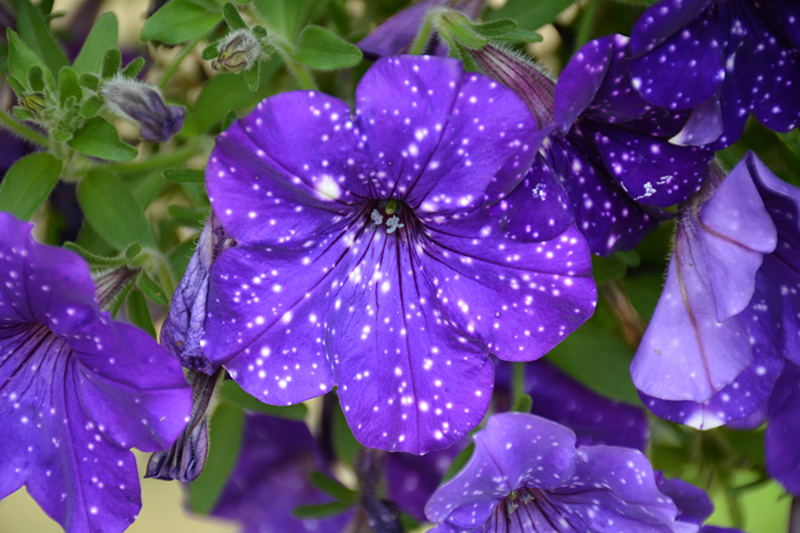

Credit via horlingsplants.ca
Watering Tips
Night Sky Petunias are drought-tolerant; however, they don’t like to be planted in soggy soil. Therefore, a well-drained soil is crucial. If you opt to grow them in a container or hanging basket, ensure there are sufficient holes for proper drainage. Also, it is recommended to allow the top layer of soil to get dry to the touch before watering again. But, keep in mind that in some cases, some planters may require watering every day, while for others, twice a week may be adequate.

Credit: rainbowjaguar

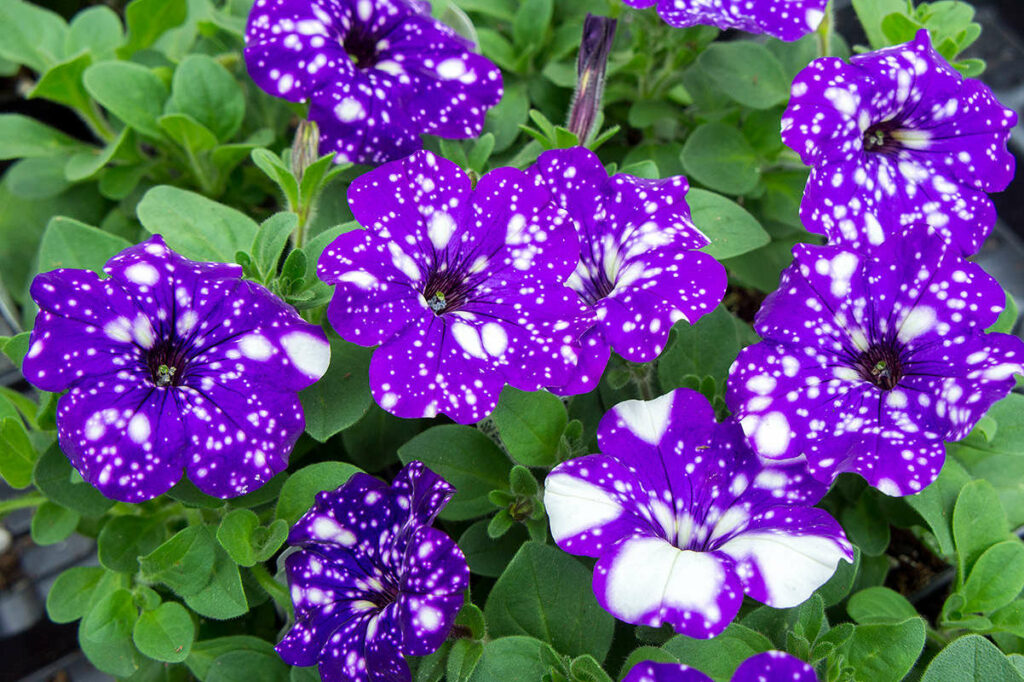
Fertilizing
Like the other petunias, Night Sky petunias also consume lots of energy to maintain their almost continuous blooming. So, they would need to be planted in rich, nutrient-dense soil with lots of organic matter. Fertilizing on a regular basis will also ensure that the plant continues to produce flowers.
If the plant is grown in a container, you can use a balanced 10-10-10 fertilizer every two weeks, otherwise, every three weeks if it’s in the garden. Doing a soil test before planting may be beneficial, as the plant needs a moderate pH. A pH that is too high can cause an iron deficiency, resulting in yellowing leaves.
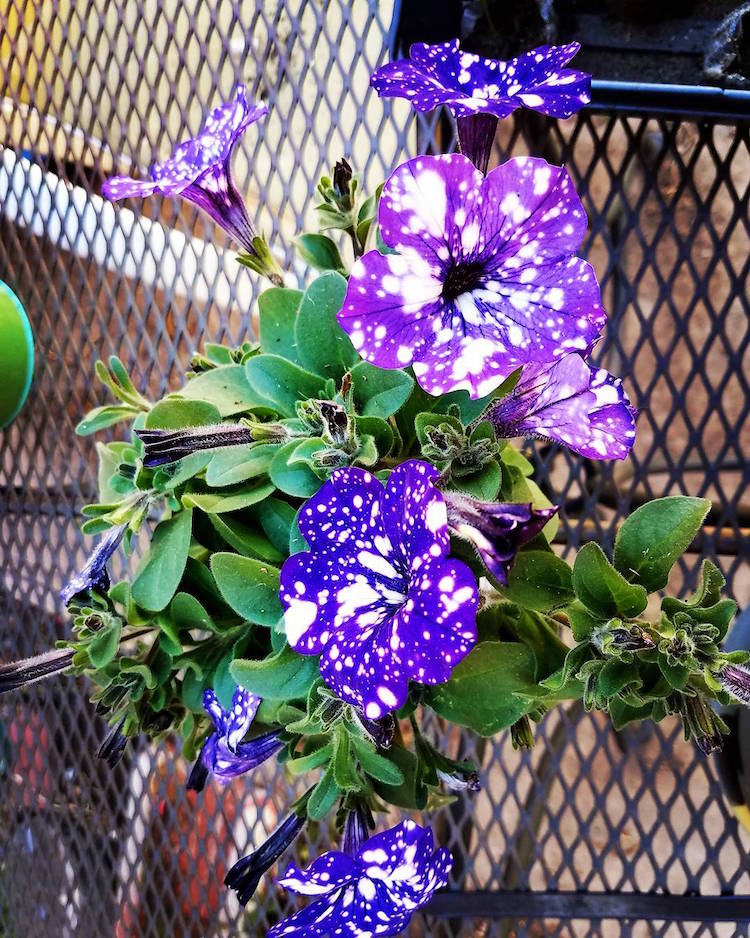
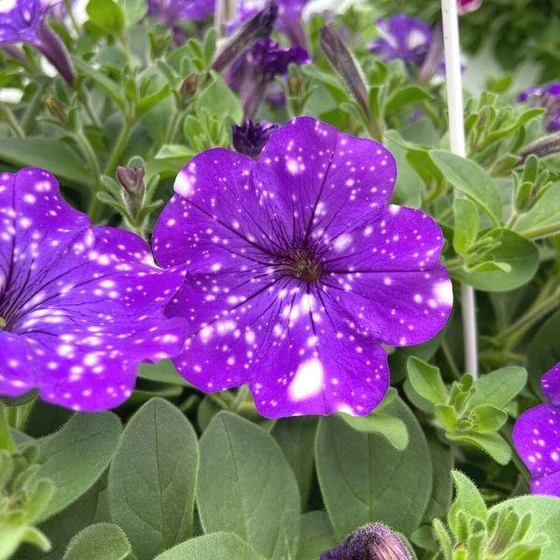

Credit: Njiris via garden.org
Deadheading
Unlike other petunias, Night Sky petunias don’t require to be deadheaded very often, as the wilted flowers will eventually fall off on their own. Deadheading merely refers to the act of removing spent flowers, so this encourages the plant to produce new blossoms. Nonetheless, you can always trim back the stems halfway through the season, if they tend to get too long.

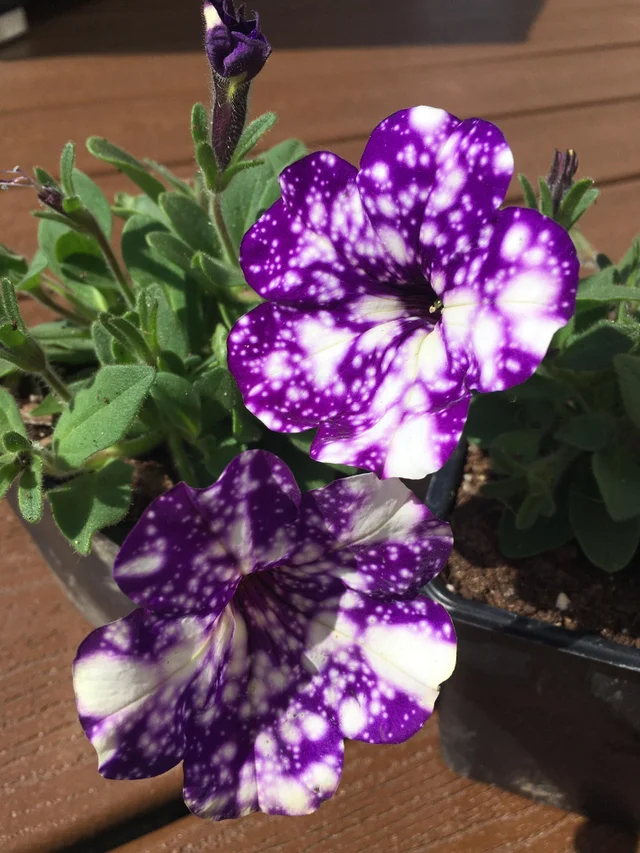
Credit: Reddit (u/tangerine264)
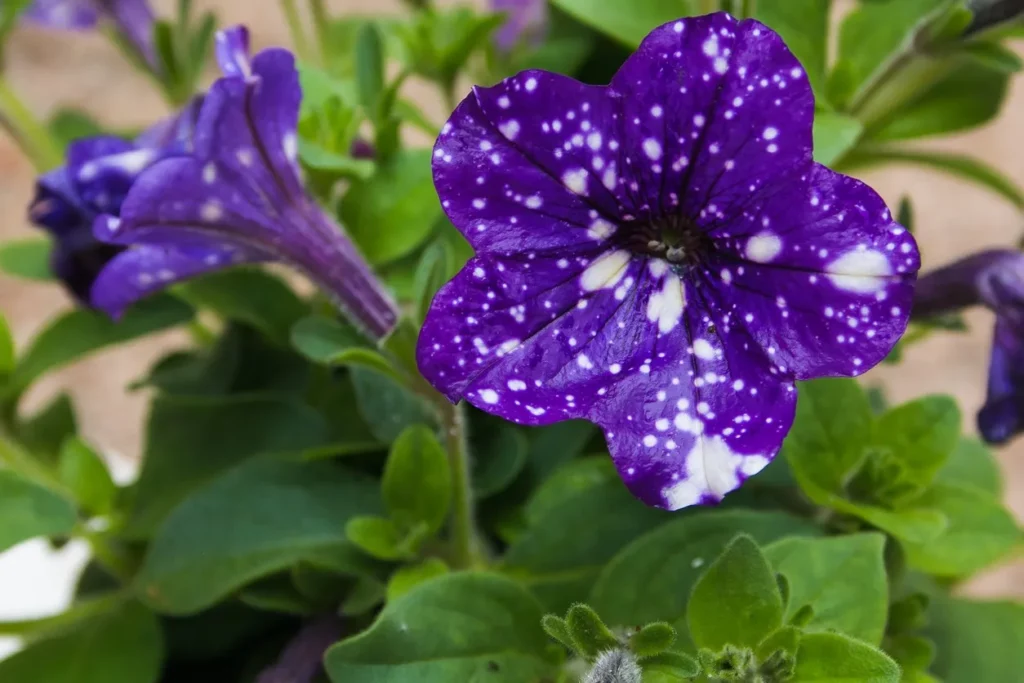
Src: illuzone,net








